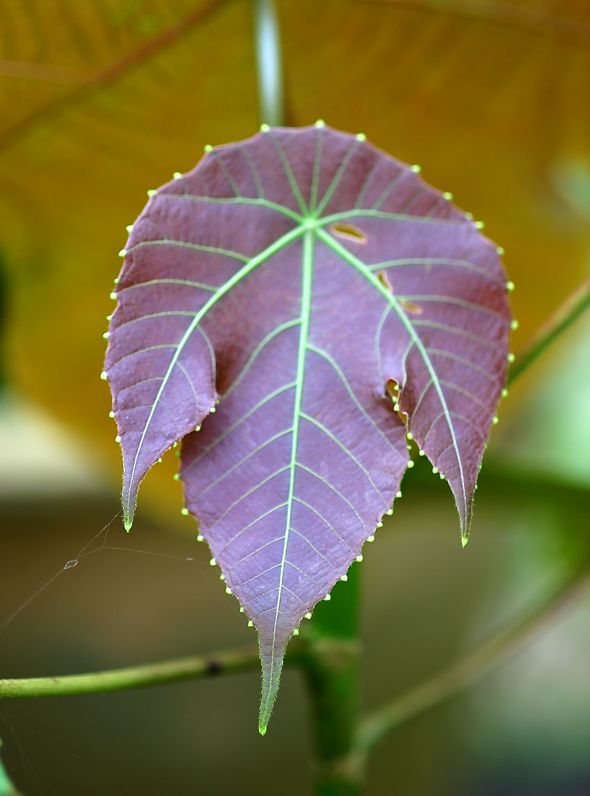The Common Mahang (Macaranga bancana) is commonly seen in Singapore’s secondary forest (above). It is easily recognised by the large, three-lobed leaves and the presence of tiny ants that nest inside the hollows of young twigs. Young leaves are reddish purple with prominent glands lining the edge (below). This is one of the most popular trees with birds. Up up to 30 species have been recorded visiting the tree, mainly for the fruits LINK.
The plant has developed an obligatory relationship with the Heart Gaster Ants (Crematogaster sp.), so named because of the heart shaped gaster or abdomen (below). The queen ant enters the young plant by chewing her way through a tender shoot. She then seals herself from inside and lays her eggs. She will have to care for the larvae until they turn into worker ants. These workers will then look after subsequent batches of eggs that the queen will lay.
The plant provides food for the ants in the form of the many small, white, starchy bodies found on the undersurface of the stipules (below: one stipule removed to show the starchy bodies; also note opening from where ants emerge from inside the stem). These stipules are the conspicuous downturned, brownish red structures found along the stem on both sides of the leaf stalk.
The ants farm scale insects of the genus Coccus in the dark hollows of the stem and feed on the honeydew that these sapsuckers secrete (below: stem sliced through to expose ants and the white Coccus sp.)
In return for providing food and lodging to these ants, the plant benefits from the protection these ants provide against herbivores, insects and pathogenic fungi. Whenever insects or other large organisms land on the plant, the resulting vibrations will alert the ants. They will then swarm out from their galleries inside the stems by way of the tiny holes that are found on the surface of the stems (below). It has been reported that these ants will then raise their rear portion, the gaster, in agitation and squirt formic acid on to the intruders.
The ants also bite off vines that come into contact with the host tree, thus ensuring that the tree does not get strangled by surrounding vines.
Caterpillars of the butterfly (Arhopala amphimuta amphimuta) have a mutualistic symbiotic relationship with these ants LINK. The latter attend to the caterpillars when they are feeding on the leaves of the Common Mahang, milking them for their sugary secretions. The ants will chase away any insects that arrive to molest these caterpillars.
Note to birdwatchers: It is safe to rest under a Common Mahang tree. The ants will not rain down on you LINK. Should you shake the branches, at the most the ants will emerge to check you out.
Credit: Wang Luan Keng (images of plants with ants) & YC Wee (image of leaves).


![Macaranga bancana-ants [WangLuanKeng] - 1](https://besgroup.org/wp-content/uploads/Macaranga-bancana-ants-WangLuanKeng-1.jpg)

![Macaranga bancana-ants [WangLuanKeng] - 5](https://besgroup.org/wp-content/uploads/Macaranga-bancana-ants-WangLuanKeng-5.jpg)
![Macaranga bancana-ants [WangLuanKeng] - 6](https://besgroup.org/wp-content/uploads/Macaranga-bancana-ants-WangLuanKeng-6.jpg)
![Macaranga bancana-ants [WangLuanKeng] - 3](https://besgroup.org/wp-content/uploads/Macaranga-bancana-ants-WangLuanKeng-3.jpg)






